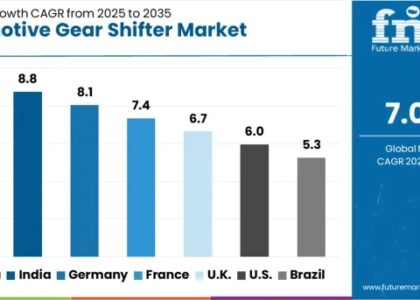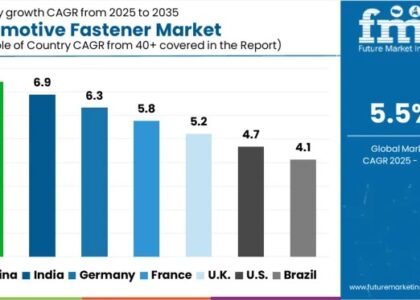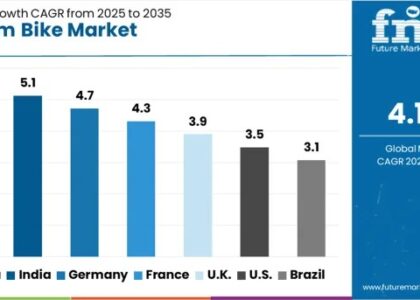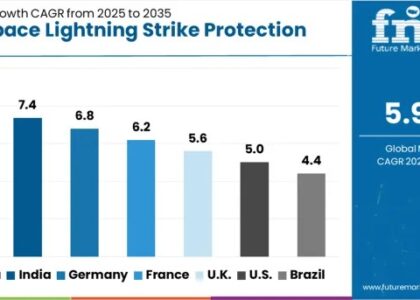
The global urinary antibacterial and antiseptic pharmaceuticals market is projected to grow at a robust Compound Annual Growth Rate (CAGR) of 4.3% during the forecast period, driven by increasing incidences of urinary infections, the growing population of diabetics, and the rising prevalence of urinary catheters. The market, valued at USD 44.2 billion in 2022, is expected to reach USD 67.34 billion by 2032.
Urinary infections, affecting areas such as the urethra, bladder, kidney, and ureters, are becoming more widespread globally, contributing to the surge in demand for urinary antibacterial and antiseptic pharmaceuticals. E. coli and S. aureus, two common causes of urinary infections, are further driving the need for effective treatments. As these infections become more prevalent, there is a rising demand for urinary antibacterial medications such as penicillin and ciprofloxacin, which are expected to see increased adoption during the forecast period.
The growing number of diabetic patients worldwide is also playing a significant role in expanding the market. Diabetes, known to increase the risk of urinary tract infections (UTIs), is prompting greater demand for urinary antibacterial treatments. Additionally, the increase in the use of urinary catheters and the availability of generic drugs are contributing to the widespread adoption of these pharmaceutical products.
The National Institutes of Health (NIH) estimates that urinary tract infections (UTIs) are the most common type of infection globally, with approximately 8.1 million patients consulting physicians annually for treatment. The Centers for Disease Control and Prevention (CDC) reports that 75% of urinary tract infections acquired in hospitals are linked to the use of urinary catheters, further underscoring the significant role of pharmaceuticals in the management and treatment of UTIs.
With increasing awareness and advancements in treatment options, the urinary antibacterial and antiseptic pharmaceuticals market is set to experience substantial growth, providing essential solutions to millions of patients worldwide.
Various drivers and restraints that shape its growth trajectory influence the Urinary Antibacterial and Antiseptic Pharmaceuticals Market. Below is an overview of these factors:
Drivers:
- Increasing Prevalence of Urinary Tract Infections (UTIs):
- The rising incidence of urinary tract infections, particularly among women, the elderly, and individuals with chronic conditions like diabetes, is a major driver for the urinary antibacterial and antiseptic pharmaceuticals market. UTIs are one of the most common infections, driving demand for effective treatments.
- Rising Antibiotic Resistance:
- The growing concern of antibiotic-resistant bacteria has led to an increasing demand for advanced and more effective urinary antibacterial and antiseptic drugs. New treatments are being developed to combat resistant pathogens, contributing to market growth.
- Expanding Geriatric Population:
- As the global population ages, the incidence of UTIs and other urinary disorders increases. Elderly individuals often experience reduced immune function and are more prone to infections, thus propelling demand for urinary antibacterial treatments.
- Rising Awareness and Diagnostic Advancements:
- Increased awareness about urinary tract infections and the availability of more sophisticated diagnostic tools have resulted in quicker identification and treatment. Early detection leads to higher consumption of antibacterial and antiseptic drugs.
- Improvement in Healthcare Infrastructure:
- Better healthcare access and advancements in medical treatments, particularly in emerging economies, have increased the diagnosis and treatment of UTIs, leading to higher demand for pharmaceutical solutions in this category.
- Growth in Self-Medication:
- Over-the-counter urinary antiseptic and antibacterial medications are growing in popularity, particularly for mild to moderate cases of UTIs. This trend is driven by increased consumer confidence and awareness, contributing to market expansion.
- Government and Regulatory Support:
- Governments and regulatory bodies are focusing on improving healthcare and promoting the availability of essential antibiotics and antiseptics for treating urinary infections, which further stimulates market growth.
Rising Demand for Market Data: Our Full Report Offers Deep Insights and Trend Analysis!
Restraints:
- Side Effects and Safety Concerns:
- Many urinary antibacterial and antiseptic drugs come with potential side effects, including nausea, allergic reactions, and long-term organ damage with overuse. These concerns can limit their widespread use, especially in vulnerable populations such as the elderly and children.
- Antibiotic Resistance:
- While antibiotic resistance is a driver in terms of innovation for new treatments, it is also a challenge. Some of the more commonly used antibiotics are becoming less effective, and this growing resistance to drugs is making treatment more difficult, creating a need for continuous development of new formulations.
- High Cost of Advanced Treatments:
- Newer antibiotics and antiseptics, especially those targeting resistant strains of bacteria, can be expensive. This may limit their accessibility, particularly in developing regions or for patients without insurance coverage.
- Stringent Regulatory Approvals:
- The approval process for new drugs in the urinary antibacterial and antiseptic market can be lengthy and challenging due to the rigorous clinical trials required to demonstrate efficacy and safety. These barriers can delay market entry for innovative treatments.
- Self-Medication Risks:
- While self-medication can drive market growth, it can also lead to improper use, which increases the risk of incomplete treatment, recurrent infections, and antibiotic resistance. This may reduce the long-term effectiveness of available treatments.
- Lack of Awareness in Low-Income Regions:
- In low- and middle-income countries, there may be insufficient awareness about the availability and proper use of antibacterial and antiseptic pharmaceuticals for UTIs, leading to underdiagnosis and undertreatment. This can hamper market growth in these regions.
- Substitution by Natural Remedies:
- The growing trend toward natural and homeopathic treatments for UTIs, including cranberry supplements and herbal products, may reduce the demand for pharmaceutical solutions. Many patients prefer these alternatives due to perceived safety and lower cost.
The Urinary Antibacterial and Antiseptic Pharmaceuticals Market is poised for growth due to rising infection rates, an aging population, and increasing awareness. However, challenges such as antibiotic resistance, safety concerns, and high drug costs can impede market expansion. The continued development of new antibiotics and antiseptics, along with efforts to address resistance and improve access to healthcare, will be crucial for overcoming these obstacles and driving sustained market growth.
Urinary Antibacterial and Antiseptic Pharmaceuticals Market: Key Players
Some of the key market players in global urinary and antiseptic pharmaceuticals market are Pfizer Inc., AstraZeneca Plc., Merck & Co., GlaxoSmithKline Plc., Bayer Pharma AG, Johnson & Johnson Private Limited, Daiichi Sankyo Company Limited and others.
Urinary Antibacterial and Antiseptic Pharmaceuticals Market: Segmentation:
The global urinary antibacterial and antiseptic pharmaceuticals market is classified on the basis of product type, distribution channel and geography.
Based on product type, the global urinary antibacterial and antiseptic pharmaceuticals market is segmented as follows:
- Antibacterial
- Antiseptic
Based on distribution channel, the global urinary antibacterial and antiseptic pharmaceuticals market has been segmented as follows:
- Hospital pharmacies
- Pharmacy & Drugstores
- E-commerce
Regional analysis includes:
- North America (U.S., Canada)
- Latin America (Mexico. Brazil)
- Western Europe (Germany, Italy, France, U.K, Spain, Nordic countries, Belgium, Netherlands)
- Eastern Europe (Poland, Russia)
- Asia Pacific (China, India, ASEAN, Australia & New Zealand)
- Japan
- Middle East and Africa (GCC, S. Africa, N. Africa)
About Future Market Insights (FMI)
Future Market Insights, Inc. (ESOMAR certified, recipient of the Stevie Award, and a member of the Greater New York Chamber of Commerce) offers profound insights into the driving factors that are boosting demand in the market. FMI stands as the leading global provider of market intelligence, advisory services, consulting, and events for the Packaging, Food and Beverage, Consumer Technology, Healthcare, Industrial, and Chemicals markets. With a vast team of over 400 analysts worldwide, FMI provides global, regional, and local expertise on diverse domains and industry trends across more than 110 countries.
Contact Us:
Future Market Insights Inc.
Christiana Corporate, 200 Continental Drive,
Suite 401, Newark, Delaware – 19713, USA
T: +1-347-918-3531
For Sales Enquiries: sales@futuremarketinsights.com
Website: https://www.futuremarketinsights.com
LinkedIn| Twitter| Blogs | YouTube





